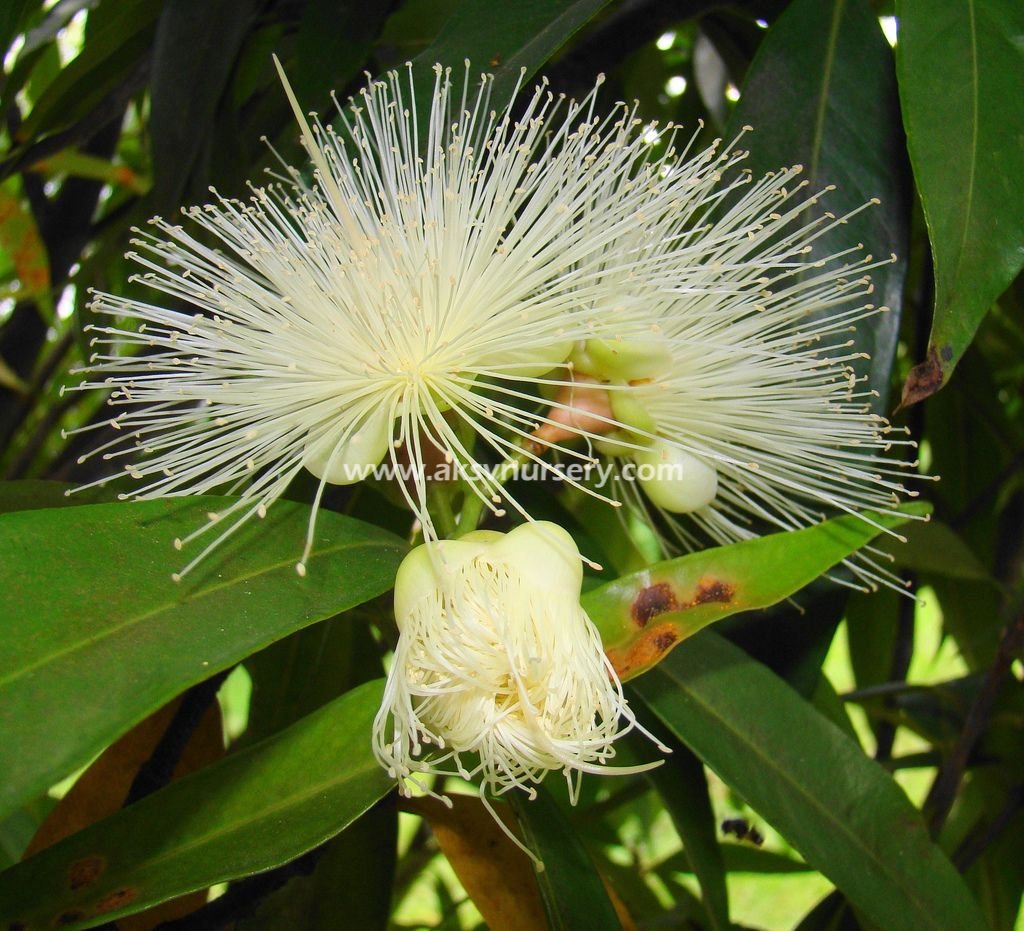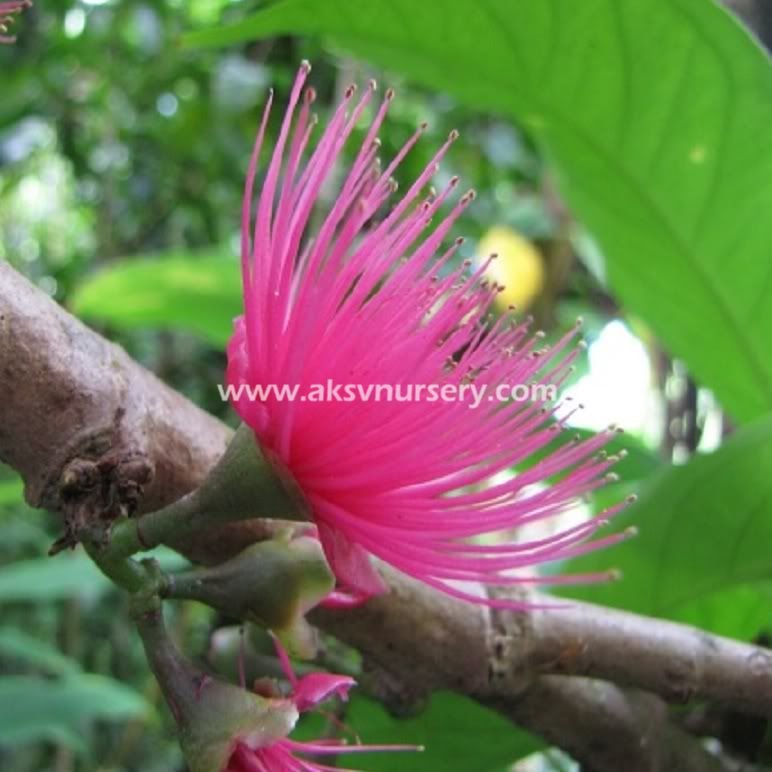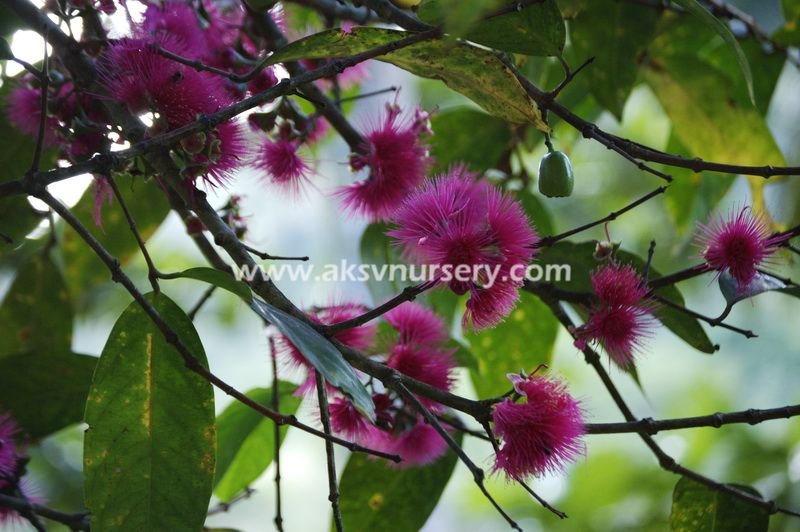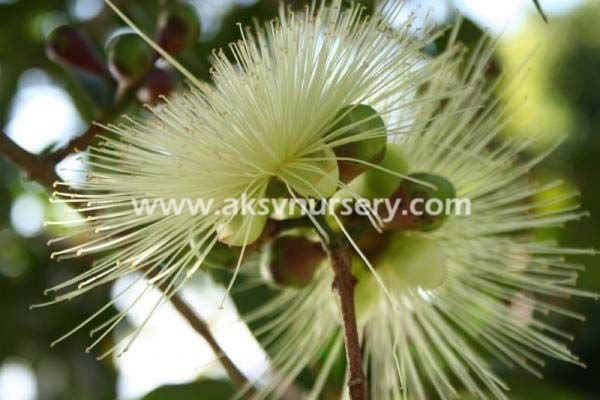Syzygium malaccense, Eugenia malaccensis, Jambos malaccensis
Family: Myrtaceae
Malay Apple, Macopa, Otaheite Apple, Pomarosa, Manzana
Origin: Malaysia
Native to Malaysia, Malay Apple was an important fruit of the Polynesians, and was later distributed to the America’s on Captain Bligh’s voyages throughout the tropics, including many Caribbean countries such as Jamaica, Suriname, Dominican Republic, and Trinidad and Tobago. It has been also spread through much of southeast Asia and the Pacific islands, now common growing wild on the Hawaiian islands. It was brought into Hawaii by Polynesians probably 1000 to 1700 years ago. The Polynesians reached the Hawaiian islands bringing plants and animals that were important to them, and Mountain apple, as it is called in Hawaii, was one of the ‘canoe plants’.
This plant grows to over 60 ft in tropics in mid-elevation rain forest areas, often as large understory tree. The evergreen leaves are opposite, soft leathery and dark green; the flowers are purplish-red and form a carpet after falling under the tree. Flowering usually occurs in early summer followed by fruit ripening 3 months later. The beautiful pear shaped fruit is about the size of an apple, deep red in color, white flesh and a waxy skin. The flesh is crunchy, often juicy, with a mild sweet flavor.
Fruit are mostly eaten fresh and chilled and make great thirst quenching snacks. The fruit can also be used to make wines. The plant has important medicinal value in many tropical countries.
Malay Apple requires tropical conditions and is too tender to grow outdoors in areas with even occasional frost. Often trees will have leaf damage at temperatures well above freezing. Trees also do not like poorly drained soils, so if planted in areas with high water tables should be planted on slightly raised mounds to give them more room for the roots during periods of high rainfall. It does not succeed as well at sea level. Other than that, it requires little care providing year-round water.














